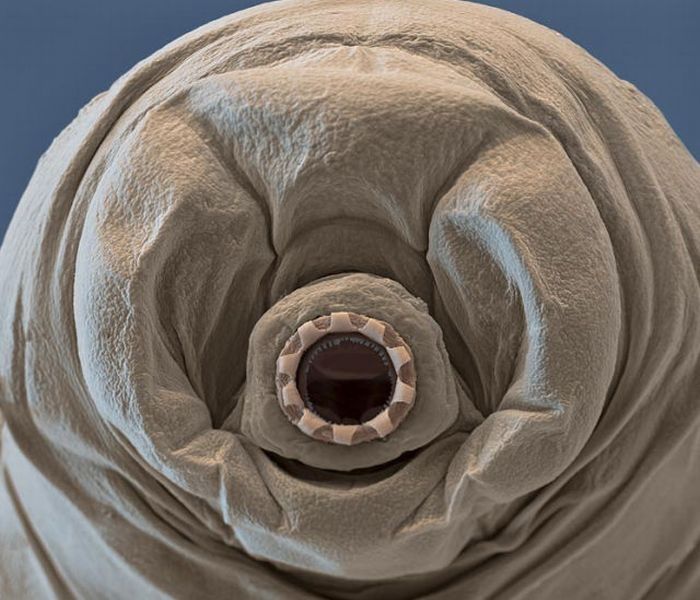|
|
Tardigrades
|
The body cavity consists of a haemocoel, but the only place where a true coelom can be found is around the gonad. There are no respiratory organs, with gas exchange able to occur across the whole of the body. Some tardigrades have three tubular glands associated with the rectum; these may be excretory organs similar to the Malpighian tubules of arthropods, although the details remain unclear.
The tubular mouth is armed with stylets, which are used to pierce the plant cells, algae, or small invertebrates on which the tardigrades feed, releasing the body fluids or cell contents. The mouth opens into a triradiate, muscular, sucking pharynx. The stylets are lost when the animal moults, and a new pair is secreted from a pair of glands that lie on either side of the mouth. The pharynx connects to a short oesophagus, and then to an intestine that occupies much of the length of the body, which is the main site of digestion. The intestine opens, via a short rectum, to an anus located at the terminal end of the body. Some species only defecate when they moult, leaving the faeces behind with the shed cuticle.
The brain includes multiple lobes, and is attached to a large ganglion below the oesophagus, from which a double ventral nerve cord runs the length of the body. The cord possesses one ganglion per segment, each of which produces lateral nerve fibres that run into the limbs. Many species possess a pair of rhabdomeric pigment-cup eyes, and there are numerous sensory bristles on the head and body.
|
|









